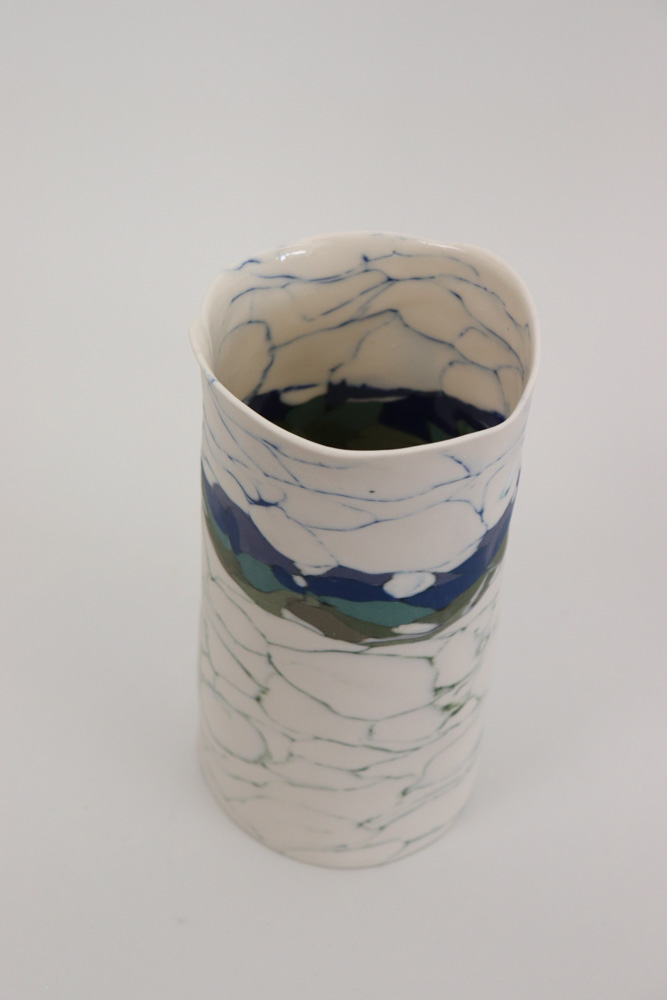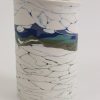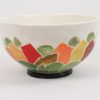High Brindabellas No. 2 by Josephine Townsend
$230.00
Coloured porcelain (nerikomi), glazed inside and sealed outside with Liquid Quartz.
Dimensions – w85 x d105 x h200mm
Created in 2022
Sold
Make an EnquiryNote: Shipping of art is free in Australia
Artist Statement
High Brindabellas
Each vessel in this nerikomi series is made with a slice from a single block composed of coloured and laminated porcelains. This block yielded 12 vessels. Nine are included in this exhibition. The mountains are depicted in purples, and greens. Lines of green in the lower section of each vessel suggest the leafy valleys and lines of blue above suggest the sky.
About the Artist
Josephine Townsend is a ceramic artist fascinated by colour, form and pattern. In this exhibition she is exploiting the unique characteristics of a range of clays, and techniques for adding colour and pattern. She works out of her home studio in Canberra creating an eclectic range of works, including vases, tableware, sculpture, wall art, jewellery and lighting. After careers in teaching and the public service, Josephine is now a full time ceramic artist and a part-time teacher of ceramics.
Nerikomi technique
Nerikomi is a complex technique that takes time. The first step is to prepare a range of coloured porcelains. The colours are added using ceramic stains and metal oxides. These are carefully blended into the soft porcelain.
The coloured porcelains are then layered together to form a block, making sure the colours are well joined to each other and that there are no air bubbles. As the image is not visible until you slice the block you have to lay the colours on carefully, hoping that you have created the imagery that you are after.
Once the block is built it must rest it for at least a week, to equalise moisture and consolidate into one piece of clay. When the block is ready, the first slice reveals the pattern. This pattern will vary throughout the block. The slice must be carefully cleaned on both sides as the colours spread across each other. The cleaned slices of patterned porcelain can then be used to create dishes, vases and jewellery.
Slow and even drying is essential as uneven drying will cause cracks, especially along the joints between the coloured porcelains. Porcelain also has a strong tendency to warp, so careful handling and drying helps. It usually takes 2-3 weeks before the pieces are dry enough for their first firing.
The first, or bisque firing, takes the pieces up to about 1000 degrees Celsius. Once fired, they are thoroughly sanded with wet and dry sandpaper to ensure that all each colour is crisply defined and clean.
It is only once the pieces are fully fired that you can see exactly what you have as the colours change significantly and the porcelain becomes translucent.
All pieces in the exhibition are glazed inside and fired to 1280 degrees Celsius. The outsides are polished to a soft sheen after they are fully fired and sealed with Liquid Quartz.



